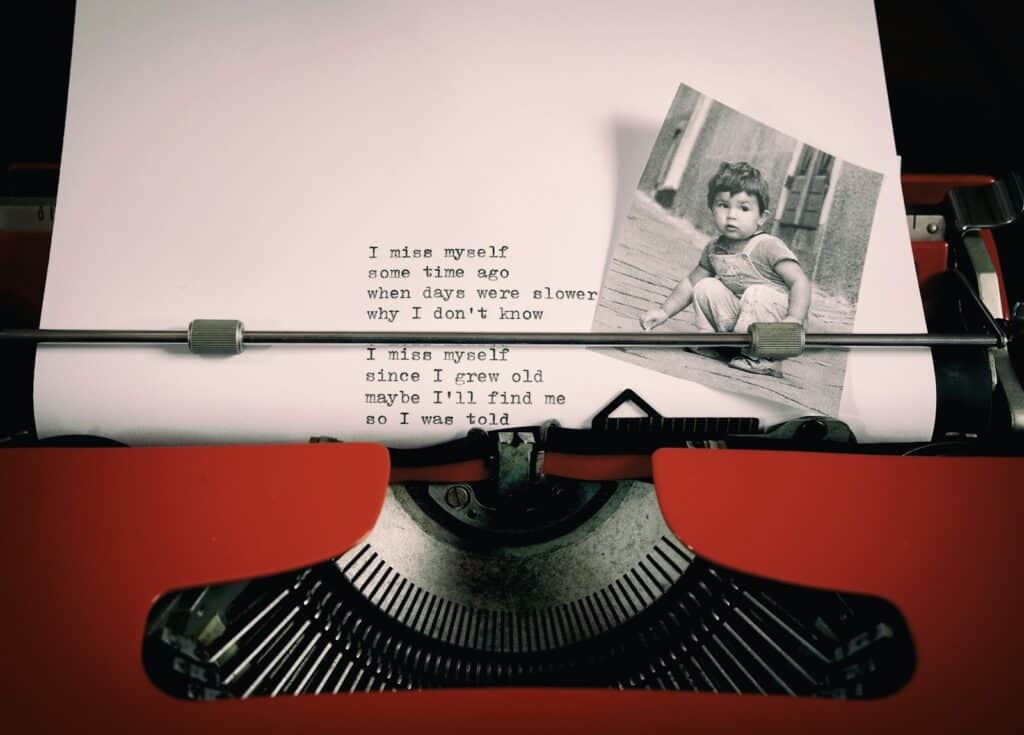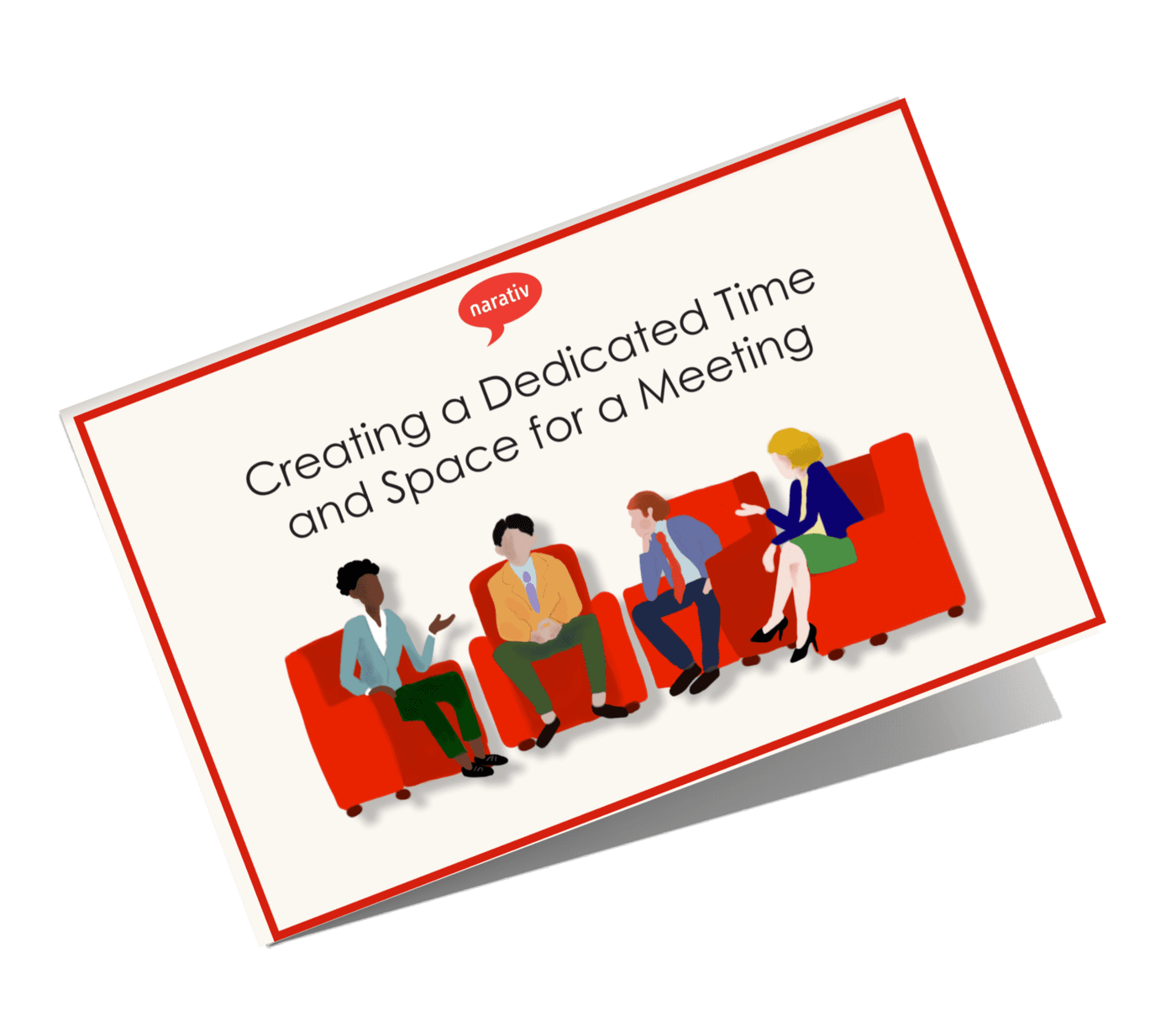Everyone loves a good story. It doesn’t matter if it is a book, the latest episode of a TV show, or even a documentary on bees (that sounds interesting by the way, let me know if you’ve seen one). The point is, stories help us understand and connect with the world around us. What people don’t often consider is that the genres of autobiography, biography, and even fiction have viable applications in business to help train tomorrow’s great leaders.

Recently, I had the pleasure of conducting a leadership training workshop for pharmaceutical company executives whose job it is to deliver insights and recommendations that will shape how treatments and drugs are brought to market. Specifically, they work with patient journeys, which describe what happens to a patient from the moment they experience symptoms to being diagnosed, to being prescribed with a treatment or drug, to being treated, and the on-going management of the illness or disease. These journeys are filled with data—and compliance issues—which make them difficult to engage with.
The challenge is that it can be hard for these executives to connect with these patient journeys because not everyone has a personal story connected to a rare illness or disease. So, how can these executives use storytelling to make an emotional connection with their audiences?
The good news is that the personal story, or autobiography, is only one type of story you can tell. There are also two other types of stories: the biography (about another’s experience) and fiction (inventing a story to illustrate a point). And whichever story type you choose, the key for leaders who are trying to inspire, educate, and engage is to use storytelling principles to make any presentation more engaging and memorable.
You don’t always have to have a personal story connected to your topic to be inspiring, but you do need to apply the principles of effective storytelling if you want your audience to care and move into action as a result of what you’re conveying to them. Today, let’s walk through each of these story types to discover stories you likely don’t realize you have and help you understand how to choose the best story type that will help you best connect with your audience.
1. Using Personal Experience: The Autobiography

The autobiography is split into a couple of essential parts: your own personal experience and the universal themes found in that experience. That experience, as well as the themes you pull from it, can help people better connect with your message. By teaching your leaders how to do this effectively, you help them learn to connect with others and develop their own relatable stories.
When developing the autobiography, I always begin with personal experience. In the case of the pharmaceutical company, I didn’t start by analyzing a patient journey through the lens of storytelling principles to make it more engaging. I had to start by giving everyone an experience of what it was like to create a personal story from scratch and then share that experience with others.
I began this exercise by coming up with a theme that everyone could relate to and then asking them to tell stories about a time when they faced a challenge and had to innovate. Many of the stories that came out included dealing with COVID-19 and how it impacted their lives, but ultimately it became about what they had overcome. I asked them to tell me stories that did not include the words “challenge” or “innovate” or “innovation” because I wanted them to convey those themes through the details of their experience. This way, their audience could identify more with their stories, without being told or given a particular interpretation. (This allows the audience to be a part of the journey. We remember the details of someone’s life more than we do their thoughts and feelings about their life.) After these executives had experience telling an autobiography story about themselves, we moved the application of storytelling to patient journeys.
This application applies as we find themes that are universal in our stories—and we can do this in leadership around any business communication—just like the theme we found amongst their stories around “overcoming hardship.” But in most settings, it’s crucial to identify the universal themes and values of your messages first rather than discover it afterward. For example, if you’re trying to convey your vision to a group of investors or employees, the impulse may be to go right to your origin story, without thinking twice, because it shows why you created the business. But have you thought of what that experience was really about? You must identify something universal you want to convey to people before launching into a story because that theme will inform which story you will tell.
Let’s take a closer look at this: If your product is a home alarm system , then your theme or value is “making people feel safe.” That will then inform the arc of your story. Every story is about change and that is conveyed through contrasting experiences. So in this example, you will need to endeavor to start your story with a moment that demonstrates the feeling of being unsafe. If you do so, your audience will understand and relate to that feeling and be curious about how you can take them or any of your customers and users from feeling unsafe to feeling safe.
So, for our pharmaceutical team, I identified these universal feelings from a patient journey that portrayed a rare illness in children. These included fear and uncertainty at the onset of symptoms. I then identified relief and care when the patient got the correct diagnosis. And finally, a sense of belonging when the treatment proved to work and the patient was managing their illness.
From there, people could look for personal experiences in their own lives where they’d had those feelings: fear, uncertainty, relief, care, sense of belonging. Who hasn’t felt that?
The stories we tell are never just about the content of the story. They’re about the feelings and information that content carries. That’s what your audience connects with. So, if you don’t identify those first, then you run the risk of telling a story that won’t land.
Find those themes, then find the lived experience that will bring those feelings and values to life. And if you can’t find a personal lived experience, then go to the next type of story.
2. Using What You’ve Learned About Another’s Experience: The Biography

Sometimes we don’t have the answer ourselves. We may not have landed the plane or survived the crash, but just like how a business relies on a diversity of people to get the job done, we can do the same with our stories. There are people all around us who have experienced a wide breadth of stories themselves. We still want to find that personal connection and universal themes—we’re just using another’s story instead of our own. And the biography allows us to do that.
One participant in our group of pharma leaders came up with a lived experience that was not his own. He had read a story about a child who had experienced the symptoms of the rare disease we were analyzing for the purpose of our workshop. When the parents of this child took her to a doctor, they said their daughter had lost a lot of weight and was not eating well. The doctor immediately thought of anorexia and said it was all psychological. The parents weren’t convinced and took their daughter to many more doctors. She underwent multiple tests, but every time, the doctors didn’t believe the girl. They thought her symptoms were psychosomatic and that she had an eating disorder. Then one day, the parents went to another doctor. He looked at the child’s history and asked her about what she enjoyed doing, as well as what she liked to eat. Nothing felt out of the ordinary for a child this age. So, he decided to run more invasive tests to see what was happening in the digestive tract. He came to the conclusion that she was not psychosomatic, nor did she have an eating disorder. He gave her parents a new diet regimen and prescribed a treatment. After a few weeks, the girl had gained 20 pounds and was going back to school and playing sports.
By opening the patient journey analysis with this story, he made his audience—and myself—care about what he was going to say next. It was ultimately a story about someone who was not believed and whose childhood was severely derailed because of a wrong diagnosis despite having an illness that was treatable. It ended with that sense of belonging that the girl had not felt in ages.
This shows that when you use the principles of storytelling to convey a lived experience that’s not yours but still hits on the emotional themes and values you want your audience to take away, you will engage your audience. They will care. They will want to hear what you have to say.
The human mind’s ability to relate isn’t limited only to our own experiences, and the power of the biographical story proves it. Teaching your leaders how to use this powerful story type in your leadership trainings opens up more possibilities for connection by providing them with another way they can build connection. And if we still can’t find a story that fits perfectly, there’s one more story type to rely on.
3. Inventing an Inspiring and Relevant Story to Illustrate Your Point: Fiction

Not every story fits every situation—and you can’t use every story in every leadership training anyway. And sometimes you just can’t find the right autobiographical or biographical story. This is where fiction comes into play. You can use it as a great leadership training exercise to fully flesh out and experience the possibilities.
Our group came up with three more stories, all fictional, to demonstrate the patient journey we were working on. Each story followed the idea of the singularity effect: when you tell the story of one individual and you see it through to the end, your audience is more capable of feeling the emotions you’re conveying than if you were speaking in generalities. This applies in any form of storytelling.
What this meant for our group was that they invented a single character. He had a name, an age, and lived in a particular place. He experienced the symptoms of this rare illness, and each storyteller went into the details of how this created fear and uncertainty for the child and his parents. As audience members, we could see a child whose love of soccer was disrupted; a child whose trips to the doctor and weight loss were worrying his parents; parents who finally heard a diagnosis from a caring doctor who went the extra mile; a child whose body started to go back to its original, healthier shape after a period of the correct treatment.
Each of these fictional stories was precise, detailed, and specific. As a result, they conveyed emotions that the audience could feel for themselves. It made them want to hear more about how this pharmaceutical company would be able to help with this illness and the impact it would have on the patients that suffer from this condition.
And while these stories were fictional and the audience knew that, they were real possibilities and allowed everyone involved to see the varied situations that could exist and how the company could help as well. There was value in the stories themselves.
Wrapping it Up
Everybody loves stories. They create a connection with the world. Without them, leadership trainings, marketing campaigns, sales initiatives, and business communication in general will ring hollow in the ears of our audiences. By using Autobiographies, Biographies, and Fiction in their proper place we can make our business more real, our leadership trainings more applicable, and our leaders more capable.
If you are interested in getting leadership training like this for your own business check out our Business Storytelling Training page or if you’d like I’m happy to speak with you personally.



